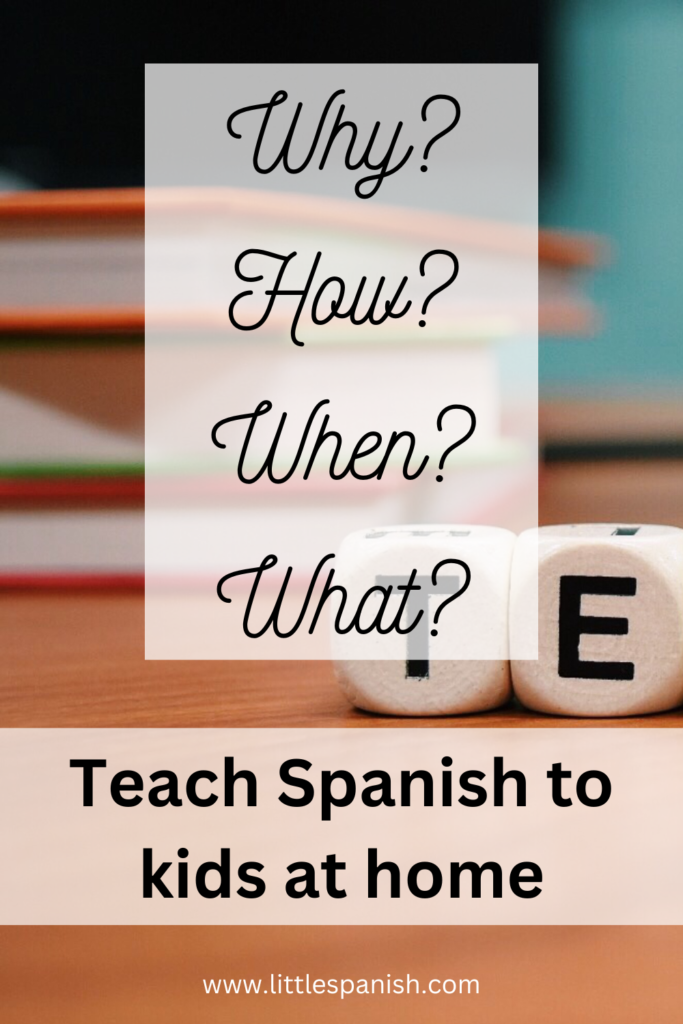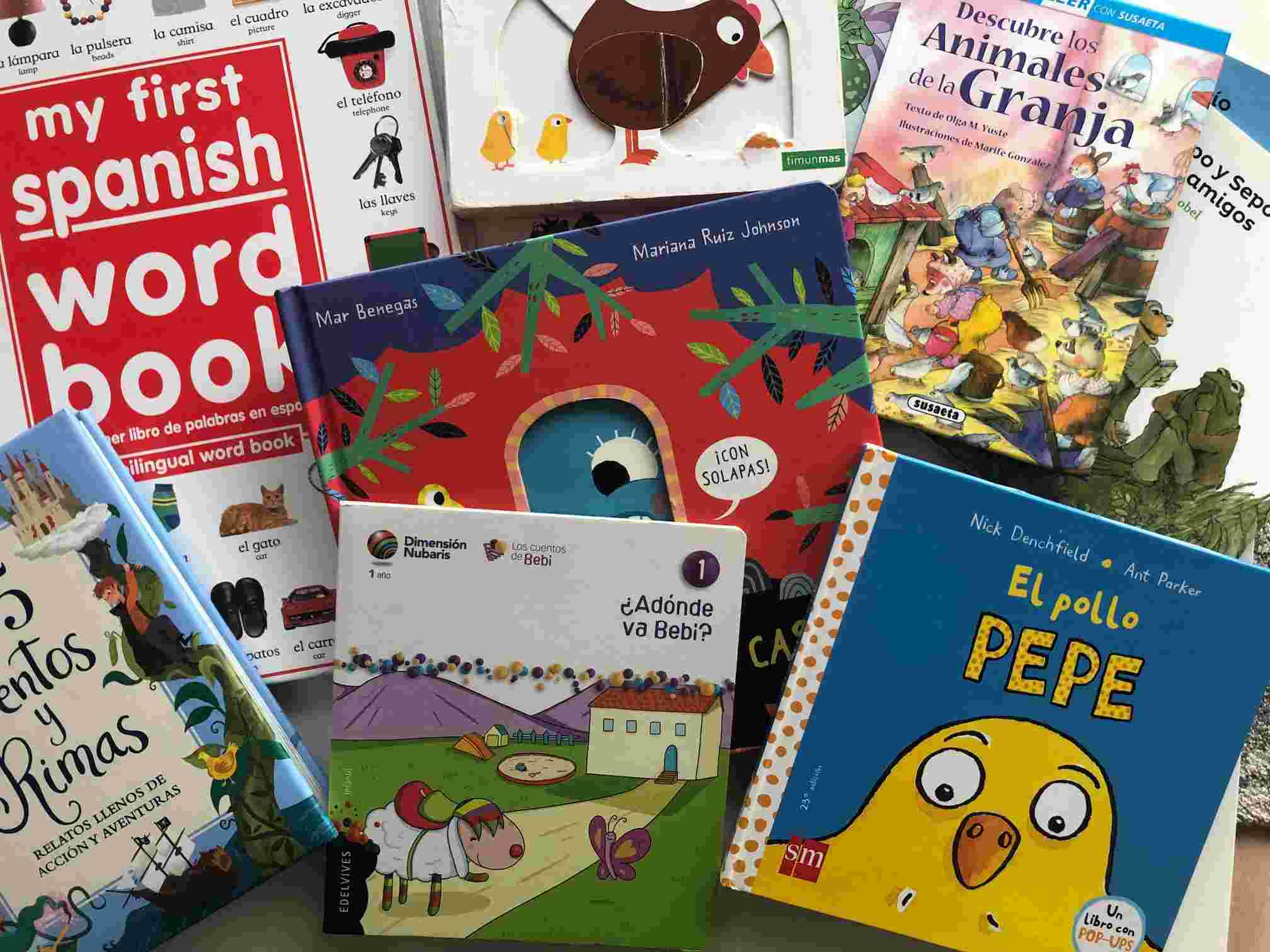Teach Spanish to kids at home

In this article we review the methods, techniques and learnings when teaching Spanish to our kids at home.
My mother tongue is Spanish and I live in a location where my mother tongue is the minority language. Teaching my children Spanish is one of my priorities since they were born. In this article I share what I have learned over the years teaching Spanish to my children in a non-Spanish speaking country.
I can summarize that for the next year I will be asking myself the questions:
Why? How? When? What?
Why is it important to teach your children Spanish?
When you start this journey of teaching a language to your children, it is important to consider the why. This answer is your internal motivator. Here are some of the reasons that motivate me on a daily basis:
When you should start teaching your child a second language?
I have always loved this phrase “The best time to start anything was yesterday. The second best time to do it, is always today”.
In our case, it was my decision to give the gift of a second language to my children since they were born. I started speaking to them in Spanish and showing them books in Spanish as they were babies.
If your children are older, it is always my recommendation to start today. In my case, the road has not been easy and I have had to start over many times with my older child, study different methods, purchase different curriculums, attend different classes.
Deciding on a bilingual model
In my case I have the privilege that Spanish is my mother tongue. In this sense I have learned that there are different models of including a new language in your family life. For example, if I want to teach my children Spanish and we live in an English speaking country, the minority language is Spanish.
- OPOL: One parent, one language. Each parent speaks one language with their children. For example, I would speak Spanish and my husband English with the children.
- Minority language at home: it is decided to speak only the minority language at home. In our example it would be to speak only Spanish at home.
- Time and place: The minority language is spoken in certain places or at certain times: speak only Spanish on weekends, or speak Spanish after dinner and before going to bed.
In my case I have decided to speak Spanish with my kids before going to bed when I read them books or on weekends when we do activities together like coloring and learn Spanish in 15 minutes.
If you want to see the coloring books I have created you can see them here or coloring pages here.(TPT) or store.
How to teach Spanish to your kids?
These are some of the ways I have tried in our home:
What to teach to your kids?
As I mentioned above, the vocabulary or topics covered in the textbooks seemed to not necessary for beginners or too boring. So I started watching videos about polyglots and how they learn new languages. Many of them said that they learned the vocabulary they found interesting or necessary for them and also the most frequently used vocabulary in the language. So these are the topics I have decided to teach my children:
- Introduce yourself: What’s your name?
- High Frequency verbs: verbs that can be used to talk about many topics. These verbs are called the sweet 16 verbs and they were introduced by Mike Peto. Estos verbos son: estar, haber, tener, ser, gustar, ir, querer, salir, hacer, ponerse, poder, dar, decir, saber, Volver, ver.
- Colors
- Numbers 1-10
- Family
- Feelings: how do you feel, what do you like?
- Animals
- Toys
These are the topics with which I would start teaching to my children. Then I would add topics based on their interests or times of the year or holidays such as winter, Christmas, summer.
I hope you have found some useful information that will allow you to adapt it to your family. I leave you with the questions
Why? How? When? What?




